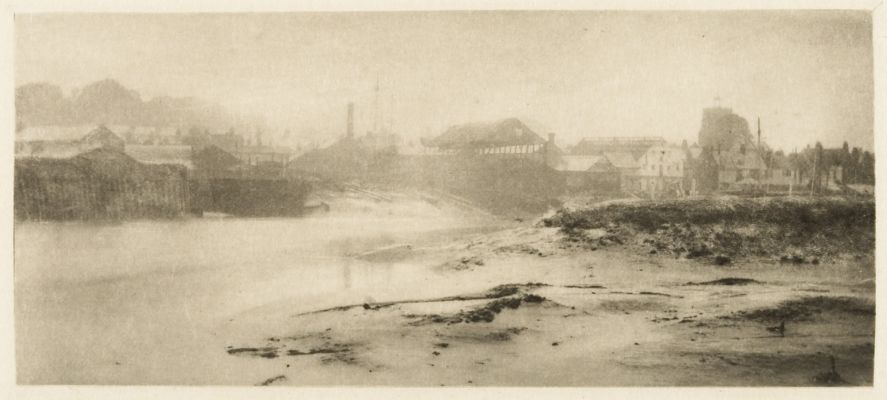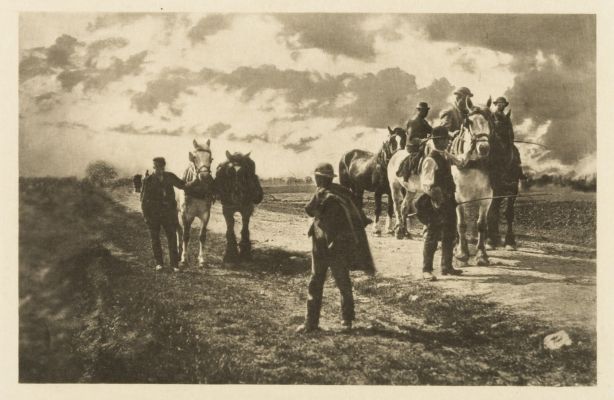
Title
L’AllegroArtist
Dyer, William B. (American, 1860-1931)Publication
Camera Work XVIIIDate
1907Process
PhotogravureAtelier
Manhattan Photogravure Company, NYImage Size
21.6 x 11.4 cm
Little is known about William B. Dyer, a founding member of Stieglitz’s Photo-Secession group who is represented in Camera Work by only two photogravures. He apparently lived in Chicago during the first decade of the century and then moved west. In addition to pursuing creative photography, Dyer worked as a commercial photographer specializing in book illustration, James Whitcomb Riley’s Love Lyrics being his best-known effort. L’Allegro may have been intended as an illustration for a poem of the same title by the seventeenth-century English poet John Milton. The photograph presents a stylized nude against a stark background, prefiguring similar friezelike work by William Mortensen and Arthur F. Kales. Dyer reportedly was one of the few Americans to enthusiastically adopt the gum-bichromate process, but only a handful of his original prints have survived. [1]
Reproduced / Exhibited
Kruse, Margret. Kunstphotographie Um 1900: D. Sammlung Ernst Juhl; Hamburg: Museum für Kunst u. Gewerbe, 1989 pl. 380
Peterson, Christian A. Camera Work: Process & Image : [exhibition, Minneapolis, Minneapolis Institute of Arts, August 31-November 3, 1985, Seattle, Seattle Art Museum, November 22, 1985-February 2, 1986]. Minneapolis: Minneapolis Institute of arts, 1985. p. 51.
Photographs by Alfred Stieglitz. New York, NY: Metropolitan Museum of Art, 1978. (platinum)
References
[1] Peterson, Christian A. Camera Work: Process & Image : [exhibition, Minneapolis, Minneapolis Institute of Arts, August 31-November 3, 1985, Seattle, Seattle Art Museum, November 22, 1985-February 2, 1986]. Minneapolis: Minneapolis Institute of arts, 1985.








